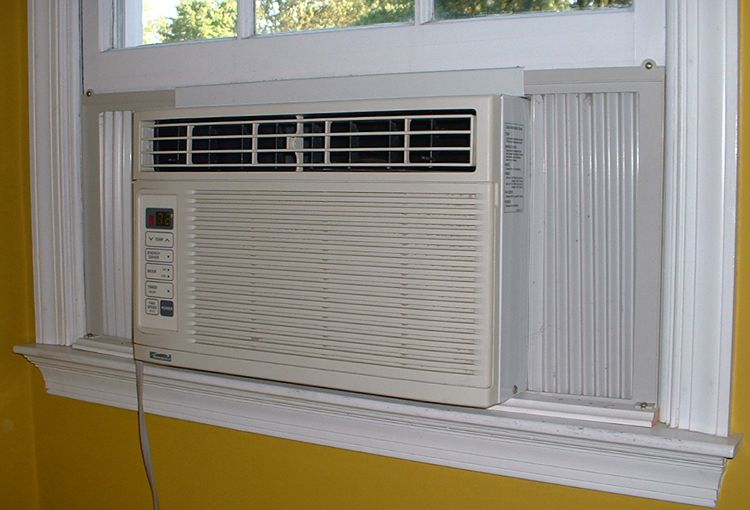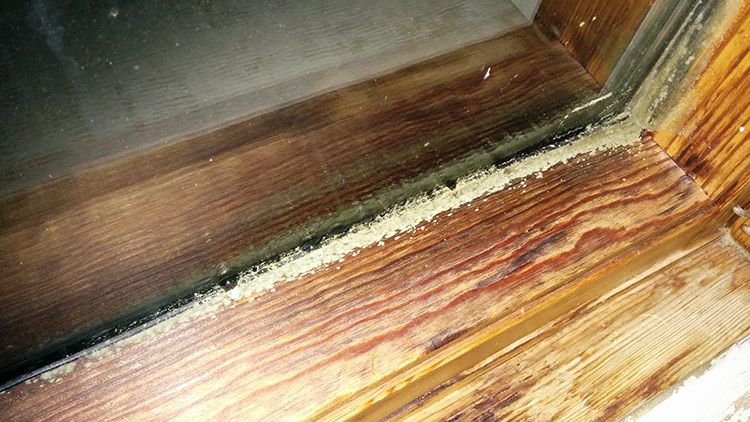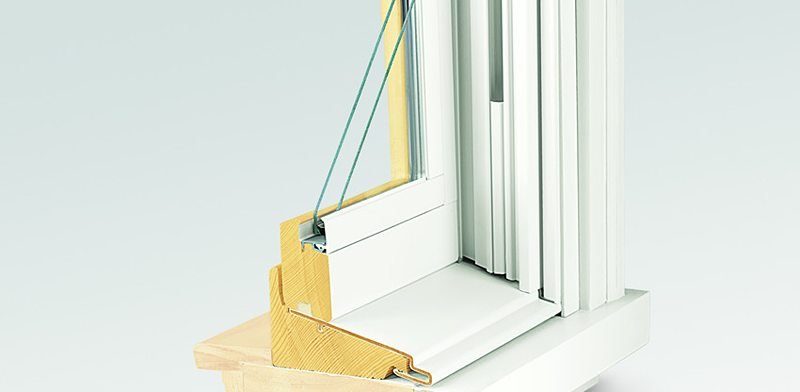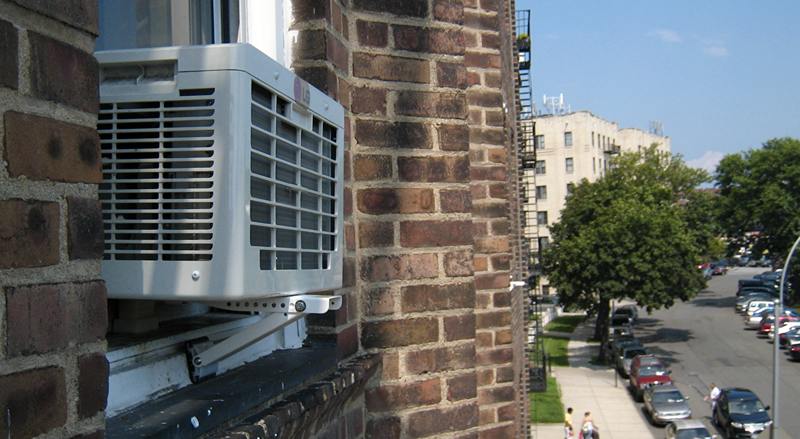Last Updated on April 30, 2023
Window air conditioner is one of the most convenient and portable alternatives to central AC system. It is very simple to install as all of its components are enclosed in a single box. However, they must be installed in a window (hence their name). So can window AC damage your windows, especially the heavy ones?
Whether window AC will damage your window depends on its weight and material, design and type of window. Lighter material windows, like vinyl, with thin components on placement surface like lips, extensions, edges, indents etc. are more susceptible to damage. Condensate leakage due to wrong placement can lead to mold on window frame and surroundings.
Moreover, unlike modern window AC units, older designs will need you to make holes, that will reduce overall window’s strength and possibly void warranty.
Window ACs are designed for windows, so normally I do not expect them to ruin your windows, especially if you have older window designs. But new energy efficient windows with lighter materials and enhanced designs may not be able to withstand unit’s weight.

Something that I am worried about even more though is condensate from your window AC coming in contact with your windows, or ending up near it. That would surely be a recipe for mold and mildew.
It took me a lot more time to research this article than I expected. I think this was probably due to so many factors that I had to take into account including newer designs and configurations with more efficient materials in the industry.
My goal is that by the end of this article, you are able to know exactly if the specific window AC you use, or want to use for that matter, is compatible with your window(s). Even if it is not, there are some solutions I plan to discuss to resolve that.
How Can a Window AC Possibly Damage Your Windows?
Window ACs are designed to be fitted in windows. So, in normal circumstances, for most scenarios, you don’t need to worry about your window AC harming your windows.
However, in some situations, they have a potential to damage your windows. Usually, it is not one but multiple factors that are responsible for that.
Below, I discuss some of the common ways your windows can be damaged in those scenarios:
1. Damage to Window Frame
The first and the most immediate damage, you would suspect by your window AC, is most probably to your window frame, due to AC’s weight.
But as I said earlier, usually it is the combination of more than one factor that results in damage to your window (that you are trying to install window AC in).
Specifically considering AC’s weight, window can be damaged, deformed or cracked either by impact load, when you initially place window AC on it, or due to constant weight acting on window frame.
Damage by impact you can pretty much bypass by placing your unit gradually and steadily in the window.
However, more concerning is the effect of constant weight of AC on window for long periods of time.
You might ask: In what situation window frame can be damaged by window AC’s weight?
The answer: By a combination of factors. Let me explain…
Normally, windows compatible and used with window ACs are single or double hung windows. A variety of material is used for them including aluminum, wood, fiberglass, vinyl and composite.
Even for a lighter material like vinyl, that is relatively less strong and rigid, I do not suspect it to simply crack, warp or deform by weight of AC.
The reason for that is that even if the material used in your windows has less strength, manufacturers would simply use more of it to achieve same kind of strength as other materials.
That is why, for the same space, you will notice that windows with vinyl frames are bulkier and bigger than let’s say a metal or wooden frame.
Damage to window by window AC’s weight, If any, will usually occur when a weaker material window has modifications like additional edges, extensions, lips, notches etc. to make it more efficient.
This way pressure on those narrow sections may become very high for them to sustain AC’s load. Consequently, sooner or later these sections will fail.
Even though your window is usable after this, its functioning and efficiency will be affected negatively in terms of air leaks, dust and allowing insects inside.
2. Mold and Mildew on Window and Its Surroundings
Wherever water contacts for extended periods of time, you can eventually almost surely expect mold and mildew there.

Water can enter inside your window due to window AC by two ways:
- Condensate leakage
- Rain coming inside.
Both of these situations are closely associated with incompatibility of your window AC with your window.
Primarily, let’s talk about rain. Rain is something that you wouldn’t expect to happen most of the time in most regions of the World.
However, if your window AC is not fitted properly in the window, there can be unfilled spaces and gaps. This means during rain water droplets will come in, regardless of whether you are running your AC or not.
There are several reasons for these spaces. They can be left if there are notches, edges, extensions etc. on window frame that are preventing proper placement of window AC.
Similarly, size difference and incompatible window types can also be reasons for unfilled spaces that may cause rain to come in.
My actual concern for you though is condensate leakage. Condensate is water that is extracted from the environment during running of window AC. Condensation is more like a secondary effect of cooling coils in your air conditioner.
But what causes condensate to leak from window AC inside your window?
Condensate leaks from your window AC primarily due to clogged condensation pipe. With dirt and sludge in pipe, water will overflow and leak, before going outside by the required passage.
Another reason could be improper fitting of window AC in window.
If your window AC is considerably tilted on a side, due to improper fitting that may or may not be due to incompatible design, especially on the base of window frame (most often double hung window), condensate can lose desired passageway and leak inside.
This will not pose a direct structural damage to window. However, with time mold and mildew will grow on its surface due to consistent contact with water.
Eventually, due to water contact, mold may extend to window sill, apron, frame and to the surroundings of window including wall.
3. Damage to Window Paint
This wouldn’t be a concern for all windows. Just those that are painted.
Some window materials like vinyl cannot be painted. Wood as well as metal windows like aluminum can be painted.
When you place your window AC in window you can expect some scratches and possible damage to paint.
The number of times you install and remove your window AC would increase chances and extent of paint damage. On top of that, if there is condensate leakage, it would cause even more damage to paint on window frame.

Anyways, scratching by removal and installation is not something that I would worry about a lot. Part of it because windows can always be repainted.
Secondly, you can easily place an intermediary soft material on loading surfaces, between window and AC to protect window surfaces (more about it in last section).
4. Voiding Window Warranty
As manufacturers get more and more competitive in design and quality, they also go above and beyond in assurances so homeowners can trust them. This means most new windows will come with some form of warranty.
Most modern window AC designs will not need any holes for screws in window. However, many older designs may require you to do that for fitting purposes.
If you do make holes in your window(s), you will most probably lose product warranty.
That is why, in my Window AC buying guide, I have stressed a lot on these kind of design features, besides other foundational elements to look for.
By the way, in that guide, I have also narrowed down to my recommended selection based on many hours of research. That window AC will even allow you to close your window when it is installed in it.
Is Your Window AC Compatible with Your Windows?
I hope I was able to indicate some possible ways your window AC can damage windows in your home.
But how to know if windows you have are safe with your window AC?
First of all, for most windows, and especially less efficient and older ones, it is unlikely for them to get damaged by your window AC. This is something to look out for in newer designs with lighter materials.
To make it easier and simpler for you to decide, I made a go-to compact list of important factors involved in this scenario.
This will help prevent any damage to your windows, especially in the long term, by understanding AC-Window compatibility.
Window Material and Design (Factor # 1)
First thing to look out for is the combination of material and design of your windows.
The reason I said combination, and not these factors individually, is because regardless of less durability and strength of material, manufacturers will keep windows strong and long lasting.
This means even if window material is relatively light and less strong, they will simply use more of it.
An example of that would be vinyl. It is relatively lighter, weaker and less rigid. But to achieve same strength as of a standard window, it is used relatively more in the window frame.
This is why, if you have ever noticed, vinyl or plastic windows are relatively bulkier than let’s say aluminum, wood or composite windows.
Look for any thin extensions, edges, lips, indents etc. that you would suspect of taking a lot of weight, especially if your windows use comparatively lighter and less strong material.

What to do in case you find any such sites on your windows?
My advice would be to contact the vendor and ask them about AC installation in windows.
If you are selecting windows then ask them beforehand, regardless of whether you will install window AC in it or not. It is always good to have an additional option.
If you have no other option then use some bypass techniques I mentioned in the last section of this article I hope they are helpful but they won’t work in all situations.
Weight of Window AC (Factor # 2)
Generally, window AC weigh between 35 lb. and 130 lb. (16-61 kg).
However, even with window ACs of same capacities you can expect a prominent variation. This is because newer models with same capacity are relatively lighter than older ones.
Let me give you a more appropriate idea of your window AC weight based on its capacity.
Window AC capacities extend from 5000 Btu to 35000 Btu, with 8000 Btu most commonly used.
An average weight of 5000 Btu window AC is close to 35 lb. and that of 8000 Btu is a little above 50 lbs.
What I am getting at is that a standard window frame, regardless of its material, should easily take window AC weight.
Weight distribution of AC on window frame is far more important than its total weight.
That is why wrong AC placement will cause window to crack or deform. Similarly, avoid low surface area zones on window from carrying AC’s weight.
Well, what to do if you encounter placement problems like this?
Primarily contact manufacturer and ask them. If you don’t have any other way, you may use other safe secondary techniques, some of which I will discuss for you in the last section.
Design and Geometry of Window AC (Factor # 3)
Window AC designs are becoming more and more convenient and efficient with time.
For example, this window AC, that I recommend too by the way, does not need a single hole in your window for installation. You won’t even need to open your window all the time when unit is in it. You can open and close your window whenever you wish.
However, regardless of inconvenience, which I don’t want for you or myself, this article is about window damage by window AC. I will try to stick to that specifically, just wanted to share some options with you.
If you ever buy a new unit though, always go with a design most suitable for your window type, design and configuration. Make sure it does not require any additional holes for supporting screws.
Also try to buy one that is most compatible in terms of weight distribution and preventing air leaks. More about it here.
How to Bypass Window AC Incompatibilities? Some Tips For You
Scenario 1: If Window Cannot Support AC’s Weight
Normally, window AC brackets are only required with heavier units. However, if your windows are susceptible to damage due to design and material complications, you may use them to protect window frame from any damage.
They will also act as an antitheft mechanism and prevent AC from falling. In some places like NYC, it is mandatory to have window AC brackets for buildings six stories and higher, regardless of unit’s weight.
However, remember that weight bearing side of these brackets usually attach at the outer side of wall. If not fixed appropriately, it may damage siding. This can lead to water damage in the worst scenario.
This unit shown below has bracket attached to outer side of window and not the wall.

Scenario 2: If Management or Community Doesn’t Allow AC In Window
Many times, you won’t be able to install a window unit due to community guidelines or restriction by management. In that scenario, if your building or home lacks central air conditioning, it would become real uncomfortable.
My suggestion would be to consider a floor unit like portable AC in this situation. They will need to be vented but that can be done with or without window.
Even if you vent portable AC via window, it will just be a little section of pipe that fits on side of window that can hardly be seen from outside.
You can know more about it (including my recommendations) here.
Scenario 3: If AC Requires Holes in Window Frame for Supporting Screws
Most modern designs won’t require you to drill any holes in your window for supporting screws. However, many older designs may need you to do that (even with new units).
For me this a big NO. Why?
Well, firstly, if your windows are in warranty, drilling holes in it will void it.
Secondly, overall strength of window frame will reduce due to drilling.
And then your windows might not look good with holes in it, after you remove AC, especially if they are uncolorable and light shaded.
I would only consider this if my windows are old and their warranty period is over, and I have no choice but to use a unit that needs screws. Check out this guide, you will know what I am talking about.
Scenario 4: If AC Damages Window Paint
Window AC placement can damage window paint, especially after installing and removing it for several times.
To avoid paint scratching, scraping and damage, you could place an intermediary compressible material at the connecting surfaces of AC and window, like a foaming sheet. This will also help diffuse window AC load on thin sections of window.


